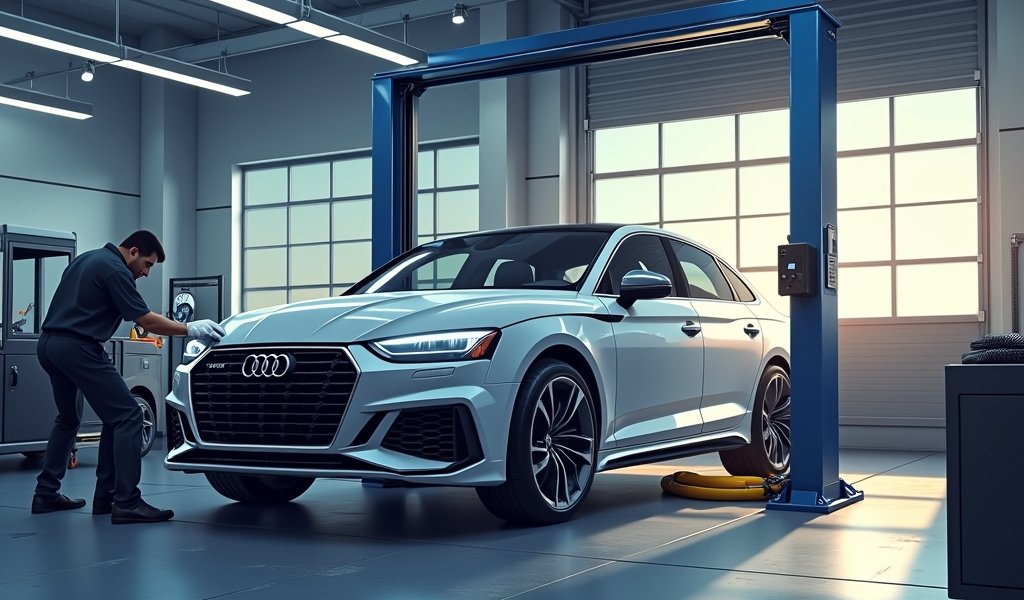Overview
This article provides five essential tips for maintaining proper tire pressure during hot weather: check pressure in the early morning when tires are cold, follow manufacturer recommendations rather than sidewall maximums, adjust pressure for heavy loads, use quality measurement tools, and monitor pressure consistently throughout summer. The advice emphasizes that proper tire pressure management improves safety, extends tire life, enhances vehicle handling, and increases fuel efficiency during hot summer conditions.
Table of Contents
- Understanding Tire Pressure in Hot Weather
- Why Hot Weather Matters for Your Tires
- Tip 1: Check Tire Pressure Early in the Morning
- Tip 2: Follow Manufacturer Recommendations
- Tip 3: Adjust Pressure for Heavy Loads
- Tip 4: Invest in a Quality Tire Pressure Gauge
- Tip 5: Monitor Tire Pressure Throughout Summer
- Conclusion
- Frequently Asked Questions
Understanding Tire Pressure in Hot Weather
Managing tire pressure in hot weather is one of the most overlooked aspects of summer vehicle maintenance. As a mechanic with over 15 years of experience, I’ve seen countless preventable tire issues caused by improper pressure during heat waves. When temperatures climb, the air inside your tires expands, potentially leading to overinflation if you’re not careful.
Think of your tires as the only point of contact between your vehicle and the road. They bear the entire weight of your car while enduring constant friction, varying road conditions, and now, extreme temperatures. That’s quite a responsibility! Maintaining proper tire pressure during hot weather isn’t just about avoiding a flat—it’s about ensuring safety, maximizing fuel efficiency, and extending the life of those expensive rubber companions.
In this comprehensive guide, I’ll share my top 5 professional tips for managing tire pressure in hot weather, along with practical advice gained from years in the garage. Whether you’re planning a summer road trip or just navigating your daily commute during a heatwave, these insights will help keep your tires in optimal condition when the mercury rises.
Why Hot Weather Matters for Your Tires
Hot weather affects your tires in ways that many drivers don’t realize until they’re dealing with a blowout on the highway. Let me explain what happens: for every 10°F increase in ambient temperature, your tire pressure typically rises by about 1-2 PSI (pounds per square inch). This might not sound significant, but when summer temperatures soar 30-40°F above spring levels, those numbers add up quickly.
The science is straightforward—heat causes air molecules to move faster and expand. Your tires essentially become pressure cookers on hot asphalt, which can reach temperatures of 140°F or more on sunny summer days. This external heat combines with the heat generated by normal driving friction, creating a perfect storm for potential tire problems.
Overinflated tires wear unevenly in the center, reducing their lifespan and compromising your vehicle’s handling. Conversely, if you release air during hot weather to compensate, you might find yourself dangerously underinflated when temperatures cool down. This balancing act makes seasonal car maintenance particularly important during summer months.
Beyond wear and tear, improper tire pressure in hot weather directly impacts your driving experience. You’ll feel it in reduced traction, poorer handling around corners, and even in your wallet—underinflated tires can lower fuel efficiency by up to 3%. For the average driver, that’s like throwing away a full tank of gas every year.

Tip 1: Check Tire Pressure Early in the Morning
The single most effective habit you can develop for managing tire pressure in hot weather is checking your tires early in the morning. I recommend making this part of your routine before temperatures begin to climb. Early morning readings give you the most accurate baseline for your tire pressure when the rubber hasn’t been heated by driving or direct sunlight.
Here’s my professional approach: aim to check your tire pressure when the tires are “cold”—meaning the vehicle has been parked for at least three hours, ideally overnight. Morning temperatures are typically the coolest of the day, providing measurements closest to your tires’ true resting state. This is the reading that most closely aligns with the manufacturer’s recommended PSI, which is calibrated for cold tires.
If you’ve already been driving, even for just a few miles, your readings will be artificially high. In summer, this difference can be substantial—sometimes 4-5 PSI above cold readings. Adjusting your tire pressure based on these elevated readings can lead to dangerous underinflation once the tires cool down.
I always tell my customers to keep a tire pressure gauge in their glove compartment and make a habit of checking tire pressure first thing in the morning at least once a week during hot weather spells. It takes less than five minutes but can save you from hours of hassle and potentially dangerous situations down the road.
Tip 2: Follow Manufacturer Recommendations
One of the most common misconceptions I encounter in my shop concerns proper tire pressure levels. Many drivers mistakenly look at the maximum PSI printed on the tire sidewall as their target pressure. This is actually the maximum safe pressure the tire can handle—not the recommended pressure for your specific vehicle.
Your vehicle manufacturer has carefully calculated the optimal tire pressure for your specific car, taking into account weight distribution, handling characteristics, and ride comfort. These recommendations can be found in your owner’s manual or on the driver’s side door jamb sticker. This is your golden number—the cold tire pressure specification that provides the best balance of safety, comfort, and efficiency.
During hot weather, it’s particularly tempting to deviate from these recommendations. Some drivers mistakenly lower their tire pressure to compensate for the natural increase that occurs with heat. According to NHTSA guidelines, this is a dangerous practice that can lead to poor handling and increased risk of tire failure.
Instead, always inflate to the manufacturer’s cold tire pressure specification, checking in the morning as mentioned in Tip 1. If you’re consistently seeing pressures 4+ PSI above recommendations during daytime checks, don’t worry—this is normal expansion due to heat and not cause for releasing air.
For those planning summer road trips with heavily loaded vehicles, check your manual for “loaded vehicle” pressure recommendations. Many manufacturers provide separate specifications for when you’re carrying extra passengers or cargo, which is particularly relevant for summer vacation travel.
Tip 3: Adjust Pressure for Heavy Loads
Summer often means road trips, camping adventures, or helping friends move—all situations where your vehicle carries additional weight. When combining heavy loads with hot weather, proper tire pressure becomes even more critical. The additional weight compresses your tires further, generating more heat and increasing the risk of failure if pressures aren’t adjusted accordingly.
Most vehicle manufacturers provide separate tire pressure recommendations for fully loaded conditions. These specifications typically call for 2-4 PSI higher than normal driving conditions. This slight increase compensates for the additional weight while maintaining proper contact with the road surface. Check your owner’s manual or door jamb sticker for these “max load” recommendations.
If you’re planning a heavily loaded trip during hot weather, I recommend this approach: adjust your tire pressure to the manufacturer’s “max load” specification early in the morning when tires are cold. Remember that once you’re on the road, pressure will increase further due to heat, which is completely normal and shouldn’t prompt you to release air.
Pay special attention to rear tires when carrying heavy loads, as weight distribution typically places more burden on them. Some vehicles actually have different pressure recommendations for front and rear tires specifically for this reason. This attention to detail becomes particularly important during summer car care when both heat and loading are factors.
After your trip, once you’ve unloaded your vehicle, remember to return your tire pressure to the standard recommendation during your next morning check. Continuing to drive at the higher “max load” setting with an empty vehicle can cause uneven wear in the center of your tires over time.

Tip 4: Invest in a Quality Tire Pressure Gauge
After years in the garage, I’ve learned that tire pressure management is only as good as the tools you use. Those inexpensive stick gauges you get for a dollar at the gas station might seem convenient, but they can be off by 2-3 PSI—a significant margin when we’re talking about tire safety in hot weather.
A quality digital tire pressure gauge is one of the best investments you can make for proper tire maintenance. A good gauge will cost between $15-30, which is minimal compared to the cost of premature tire replacement or dealing with a blowout. Look for gauges with clear digital displays, comfortable grips, and accuracy ratings of ±1 PSI or better.
I recommend gauges with additional features like backlit displays (for early morning checks) and pressure-release buttons that allow you to precisely decrease pressure if needed. Some advanced models even compensate for ambient temperature, though these aren’t necessary for most drivers.
While we’re discussing tools, consider keeping a portable air compressor in your vehicle during summer travels. Today’s models are compact and can plug into your car’s 12V outlet. Consumer Reports notes that properly inflated tires can improve fuel efficiency by up to 3%—a significant savings on long summer road trips.
Remember that even gas station air pumps and built-in tire pressure monitoring systems (TPMS) can be inaccurate. Your personal quality gauge should be the final authority on your tire pressure. I’ve seen TPMS sensors be off by as much as 5 PSI, which is enough to significantly impact handling and tire life, especially in hot conditions.
Tip 5: Monitor Tire Pressure Throughout Summer
Consistent monitoring is perhaps the most overlooked aspect of tire pressure management in hot weather. Many drivers check their pressure once at the beginning of summer and assume they’re set for the season. In reality, summer weather patterns can be highly variable, with temperature swings of 20-30°F between cool fronts and heat waves.
Establish a regular weekly check-up routine throughout the summer months. Monday mornings work well for most people, creating a habit that’s easy to maintain. These regular checks will help you spot gradual leaks that might otherwise go unnoticed until they cause problems.
Pay particular attention to pressure changes during extreme heat waves. When temperatures suddenly spike 15-20°F above normal, your tire pressure can increase accordingly. While this normal expansion isn’t usually cause for concern, extremely high pressures (7+ PSI above recommendations) during heat waves might require slight adjustments.
Don’t forget to check your spare tire monthly as well. According to tire experts, spare tires often get neglected until they’re needed, at which point discovering they’re flat creates an even bigger emergency. Donut spares typically require higher pressure (often 60 PSI) than your regular tires, so check your manual for the correct specification.
If you notice one tire consistently losing pressure faster than others, have it professionally inspected. Hot weather can accelerate air loss through minor punctures or valve stem issues. What might be a slow leak in cooler weather can become a more rapid problem during summer heat.
Conclusion
Properly managing tire pressure in hot weather is one of those maintenance tasks that separates careful vehicle owners from those who’ll eventually find themselves stranded on the roadside. The five tips we’ve covered—checking in the morning, following manufacturer recommendations, adjusting for heavy loads, using quality tools, and consistent monitoring—create a comprehensive approach to summer tire care.
Remember that your tires are literally where the rubber meets the road. They affect everything from safety to fuel economy to the overall driving experience. The few minutes you spend managing tire pressure during hot weather will pay dividends in extended tire life, improved safety, and better performance.
As temperatures continue to climb, make tire pressure checks part of your regular routine. Your vehicle will handle better, your tires will last longer, and you’ll have one less thing to worry about during your summer adventures. After all, proper tire maintenance isn’t just about avoiding problems—it’s about optimizing your vehicle’s performance when you need it most.
Frequently Asked Questions
Should I release air from my tires when the weather gets hot?
No, you should not release air just because of hot weather. Tire pressure naturally increases with temperature, but manufacturers account for this in their recommendations.
How much does tire pressure increase in hot weather?
Tire pressure typically increases by 1-2 PSI for every 10°F increase in temperature. During summer, this can mean a 4-6 PSI increase from morning to afternoon.
Can I check tire pressure after driving in hot weather?
It’s best to avoid checking pressure on hot tires as readings will be artificially high. Wait at least 3 hours after driving for an accurate cold pressure reading.
What happens if my tires are overinflated in hot weather?
Overinflated tires wear more quickly in the center and provide less traction. They also deliver a harsher ride and are more susceptible to damage from road hazards.
How often should I check tire pressure during summer?
Check your tire pressure at least once a week during summer, preferably in the early morning. Increase to twice weekly during extreme heat waves or when traveling long distances.


Pingback: Seasonal Tire Care Tips: 7 Proven Hacks - knowsyourcar.com